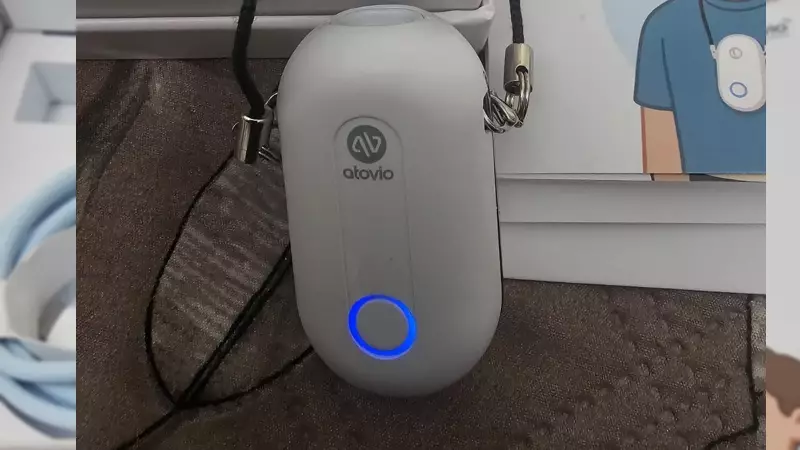
Delhi Residents Turn to Wearable Purifiers as Air Quality Worsens
With Delhi's air quality index consistently fluctuating between the 'Severe' and 'Very Poor' categories, the capital's residents are increasingly exploring portable solutions to combat pollution. The city's deteriorating air conditions have sparked interest in wearable air purifiers, compact devices designed to create personal clean air zones around the wearer.
Understanding Air Quality Categories and Health Risks
The Central Pollution Control Board classifies an AQI of 301–400 as 'very poor' and 401–500 as 'severe'. Prolonged exposure to very poor air quality can trigger respiratory illnesses, especially affecting individuals with pre-existing lung and heart conditions. At severe levels, even healthy people may experience breathing difficulties, while vulnerable groups face significant health threats.
How Wearable Air Purifiers Work
These portable devices come in two primary forms: mask-type purifiers and compact neck-worn units. The latter category consists of small, battery-powered devices that release charged ions. These ions attach to fine particulate matter like PM2.5, increasing their mass and causing them to settle out of the breathing air. The technology aims to create a protective bubble of purified air around the wearer's nose and mouth.
Different models employ varying technologies, with significant implications for effectiveness. Devices equipped with High-Efficiency Particulate Air filters can remove 40% to 90% of particulate pollutants and allergens in semi-enclosed environments. However, ioniser-based models typically deliver more modest results and may pose health risks due to potential ozone emissions.
IIT Kanpur Study Reveals Critical Limitations
A December 2024 study conducted at the National Aerosol Facility, IIT Kanpur, under Professor Sachidanand Tripathi's leadership, tested wearable air purifiers in controlled indoor settings. The research demonstrated impressive results in enclosed spaces, with up to 90% reduction in airborne particles within 30 minutes in a 35-cubic-foot chamber.
Professor Tripathi emphasized that outdoor environments present completely different challenges. "In a room environment, if the fan is off and ventilation is limited, the air is relatively quiescent... the device performs effectively," he explained. However, he cautioned that outdoor conditions with constantly changing aerosol loads and wind movement introduce "several complexities," making these devices suitable primarily for enclosed spaces.
Dr Nikhil Modi, Senior Consultant in Respiratory and Critical Care at Indraprastha Apollo Hospitals, supported these findings. "In highly turbulent or open outdoor settings, their effectiveness diminishes rapidly due to the constant mixing of polluted outdoor air with the small zone around the wearer," he stated.
How They Compare to N95 Masks
Experts unanimously caution against viewing wearable air purifiers as a comprehensive solution to Delhi's pollution crisis. Sunil Dahiya, lead analyst and founder of Envirocatalysts, remarked that these devices are "merely an added cosmetic accessory" rather than a genuine solution to air pollution.
Most wearable purifiers cannot match the protection level offered by certified N95 masks, particularly against gases or in heavily polluted outdoor environments. "An N95 mask is a much better personal protection device than a wearable purifier," Dahiya emphasized. He stressed that real freedom from high pollution exposure will only come from reducing emissions at their source, rather than relying on individual protective gadgets.
Market Growth and User Recommendations
Globally, the Asia-Pacific region, driven primarily by China and India, dominates the wearable air purifier market, accounting for at least 35% of sales. North America follows with 30%, while Europe holds approximately 25% market share according to industry studies.
These devices are generally suitable for most adults and older children, particularly those with respiratory issues, allergies, or pollution sensitivities. Urban commuters, outdoor workers, and individuals in high-exposure occupations may find them beneficial. However, caution is advised for young children, pregnant women, and people with medical implants like pacemakers. Ioniser-based models raise particular safety concerns due to limited testing in these populations.
The growing popularity of wearable air purifiers was highlighted when senior Congress MP Shashi Tharoor, a long-time user, praised their cost-effectiveness and sleek design last year. Despite this endorsement, experts maintain that while these devices might serve as conversation starters about air quality issues, they offer limited practical protection against Delhi's severe outdoor pollution.





